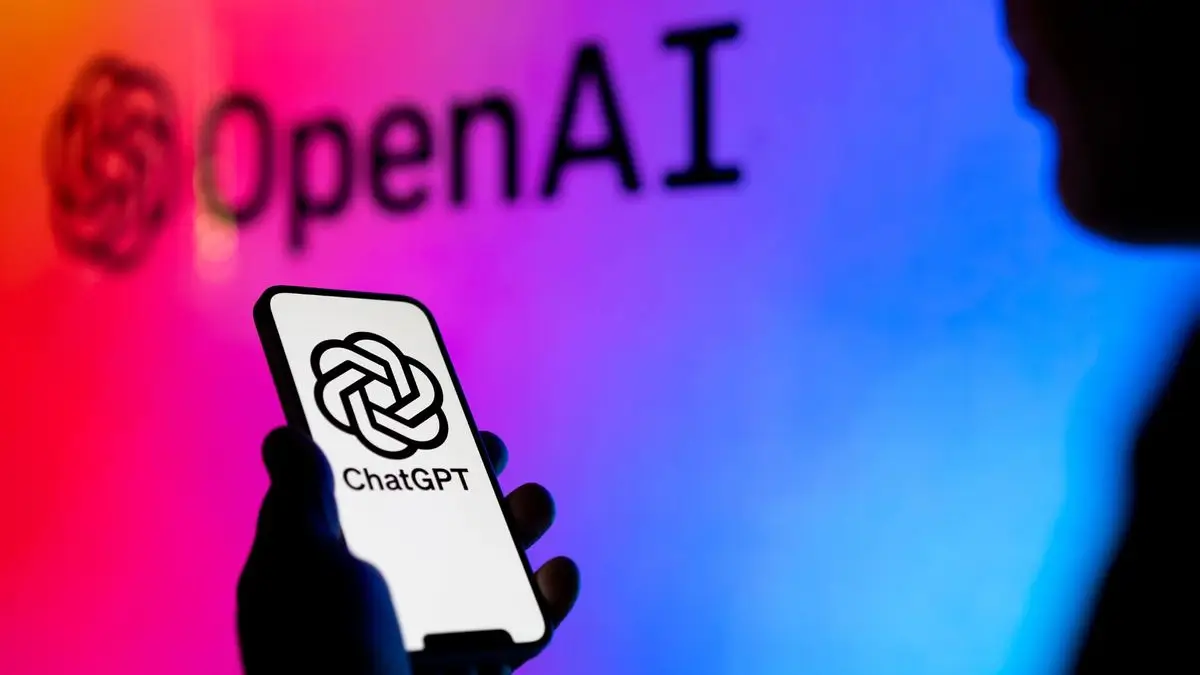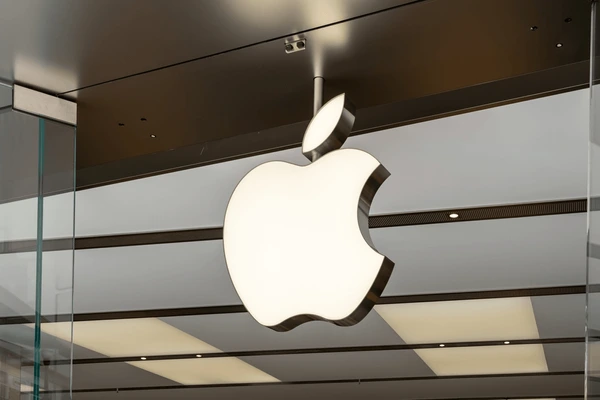AI Revolution: ChatGPT Merges with GPT-5 for Superior Intelligence

ChatGPT Gets a Major Overhaul with GPT-5
OpenAI is paving the way for a simpler, smarter future. In a recent update, CEO Sam Altman dropped some major news that promises to end the confusing model picker process for ChatGPT users. Instead of choosing between different models—such as GPT-4 for everyday tasks or specialized versions like o3-mini for problem-solving—users will soon benefit from a unified AI experience. This revolutionary roadmap hints at a GPT-5 release window and a major overhaul that integrates all OpenAI’s language models into one intelligent system.
In this post, we dive into what “magic unified intelligence” means, how GPT-4.5 plays its final role, and what to expect from GPT-5. We’ll also discuss the benefits of unlimited access and tiered intelligence for both free and paying subscribers. Whether you’re a tech enthusiast or a business owner looking to stay ahead of the curve, this guide will help you understand the transformative future of ChatGPT.
What Does It Mean for ChatGPT?
A Return to “Magic Unified Intelligence”
For years, ChatGPT users have had to manually select between models depending on the task at hand. This fragmented experience has often left consumers confused about which model is best for their needs. Sam Altman recently addressed this pain point on X (formerly Twitter), stating:
“We want AI to just work for you. We realize how complicated our model and product offerings have gotten. We hate the model picker as much as you do and want to return to magic unified intelligence.”
This vision of unified intelligence means that ChatGPT will soon automatically determine the most suitable model for any given prompt—eliminating the need for users to choose between, say, GPT-4 and o3-mini. Instead, the system will leverage the full spectrum of OpenAI’s models to deliver answers that are both contextually accurate and highly relevant.
Why Unified AI Matters
Unified AI isn’t just a technical upgrade—it represents a leap forward in user experience. Today’s users sometimes struggle to know which model to select for optimal performance. With unified intelligence, ChatGPT can:
- Automatically detect user intent: Using advanced natural language processing (NLP), the system will analyze your query and choose the perfect model to answer it.
- Streamline user interaction: By removing the need for manual model selection, the process becomes faster and less confusing.
- Enhance overall quality: The combined strength of multiple models working in harmony will produce more reliable, detailed, and nuanced responses.
For more on improving user experience through advanced AI, check out this article on AI-driven UX improvements.
GPT-4.5: The Last Standalone Model
The Transition to an Integrated System
According to Altman, GPT-4.5 will be the final model available as a standalone option before OpenAI fully unifies its offerings. This transition marks the end of an era where users had to toggle between different models for various tasks. GPT-4.5’s release is not just an incremental update—it’s a critical step towards a seamless, integrated system that can dynamically use all of OpenAI’s tools.
When GPT-5 launches, it will integrate key technologies from the o-series models (like o3) into a single, coherent system. As a result, the o3 model will no longer be offered as a standalone option.
What This Means for Developers and End Users
For developers, this unified approach simplifies integration into applications, as there’s no longer a need to choose which model to deploy. End users, on the other hand, will enjoy a smoother, more intuitive experience—where ChatGPT determines the best approach to solve a problem without any manual intervention.
Unlimited Access to GPT-5
Tiered Intelligence for All Users
Another major highlight from Altman’s roadmap is the introduction of unlimited access to GPT-5 for free-tier users at its “standard intelligence setting.” Meanwhile, paying subscribers will receive enhanced capabilities. Here’s the breakdown:
- Free Users: Unlimited access to GPT-5 at a standard intelligence level. This ensures that even those who do not pay can benefit from the next-generation AI.
- Subscribers: Pro subscribers, paying a premium fee (reportedly $200/month), will unlock the highest level of GPT-5 intelligence—delivering even more advanced reasoning and creative outputs.
This tiered approach not only democratizes access to cutting-edge AI technology but also incentivizes upgrades for users seeking top-notch performance.
Implications for Business and Innovation
For businesses, having free and premium options means they can choose the level of service that aligns with their needs and budgets. The prospect of GPT-5 offering a higher level of intelligence for paying customers could drive innovation in fields such as content creation, customer service, and complex problem-solving.
Read more about how tiered AI services are changing the digital landscape on Wired.
OpenAI’s Roadmap
Simplifying a Complex Landscape
OpenAI’s roadmap reveals a commitment to transparency and user-centric design. Altman emphasized the need to simplify product offerings to make AI “just work” for everyone. By integrating all GPT models into a unified system, OpenAI aims to eliminate the friction currently experienced by users.
This move is seen as a direct response to feedback from the AI community, which has long criticized the need to manually pick between models. The unified approach is not only expected to improve usability but also to enhance the overall quality of responses by dynamically selecting the best model for each task.
Industry Experts Weigh In
Several industry experts have lauded the move. For example, AI researcher Ameet Deshpande recently noted that “a unified system will not only streamline operations but also set a new standard for AI responsiveness and accuracy.” Similarly, digital marketing specialists have pointed out that a seamless ChatGPT experience could open new doors for content creation and customer engagement.
For further expert opinions, check out this insightful piece from The Guardian on chatbot optimization.
What to Expect from GPT-5 and Beyond
Incorporating Advanced Features
While a precise release date remains unconfirmed—Altman casually mentioned “weeks / months” in response to user queries—the upcoming GPT-5 promises to incorporate a host of advanced features, including:
- Voice Integration: Enabling conversational interactions with seamless voice-to-text and text-to-voice capabilities.
- Canvas and Search Capabilities: Allowing users to conduct deep research and even access visual data.
- Enhanced Deep Research: Facilitating complex problem-solving through improved reasoning and contextual understanding.
- Unified Tool Access: Combining all available OpenAI tools into a single system that adapts dynamically to user needs.
These enhancements will redefine how we interact with AI, making it not just a tool, but a collaborative partner in everyday tasks and professional projects.
Preparing for the Future of AI
As the AI landscape continues to evolve, staying informed and adaptable is key. For businesses, the arrival of GPT-5 means rethinking content strategies, customer service protocols, and even product development cycles. For individual users, it’s an opportunity to leverage a more intelligent, user-friendly AI that truly “just works.”
How Unified AI Will Transform Everyday Use
Enhanced User Experience
One of the most immediate benefits of a unified ChatGPT is its potential to drastically improve the user experience. With AI now capable of selecting the best-suited model based on your query, you no longer have to wonder if you’re using the right tool. This leads to:
- Faster Responses: No delays from model switching means quicker, more accurate answers.
- Improved Accuracy: The integrated system leverages the best of multiple models, ensuring responses are precise and contextually appropriate.
- Seamless Interactions: The elimination of manual model selection removes a significant barrier to entry, especially for non-technical users.
Simplifying Complex Tasks
For professionals and businesses, unified AI can simplify workflows that currently require juggling between various tools. Whether you’re drafting emails, conducting research, or generating creative content, the system’s ability to dynamically adjust its intelligence level can save time and improve productivity.
The Impact on Developers and Application Integration
A Streamlined Integration Process
Developers have long had to contend with the challenge of selecting and integrating the appropriate AI model for specific applications. With the advent of unified intelligence, the integration process becomes far more straightforward. Instead of coding for multiple models and maintaining separate systems, developers can now build on a single, cohesive API that automatically leverages the best available AI tool.
- Reduced Complexity: One unified API means fewer resources spent on managing multiple integrations.
- Increased Flexibility: Applications can now seamlessly switch between different AI functionalities without additional coding.
- Improved Maintenance: With a single system to update and manage, long-term maintenance becomes significantly easier.
Opportunities for Innovation
The unified system opens up a range of opportunities for innovation. Startups and established companies alike can experiment with new use cases—ranging from enhanced customer support bots to sophisticated content generation systems—without worrying about compatibility issues or manual model selection. This could lead to breakthroughs in areas such as personalized education, real-time translation services, and intelligent virtual assistants.
Challenges and Considerations
Transitioning from Legacy Systems
While the unified approach promises numerous benefits, transitioning from legacy systems that rely on distinct models may present challenges. Businesses and developers will need to:
- Reevaluate Existing Workflows: Adapt current processes to accommodate the new unified system.
- Invest in Training: Ensure that teams understand how to leverage the unified API and optimize content for the new system.
- Monitor Performance: Continuously track the performance of AI responses and make adjustments as necessary.
Maintaining Transparency and Trust
One of the concerns with advanced AI systems is maintaining transparency. As AI models become more complex, it’s crucial to ensure that the decision-making process remains understandable to users. OpenAI’s commitment to transparency in its roadmap and regular updates will be essential in building trust with users and stakeholders.
Expert Opinions and Industry Insights
What Leading Voices Are Saying
Sam Altman’s announcement has sparked significant discussion across tech communities. Industry experts agree that unified intelligence could mark a turning point for AI interaction. Here are some of the key sentiments:
- Simplicity is Key: Many experts praise the move to a unified system, noting that it will dramatically simplify the user experience.
- Innovation Overload: Others emphasize the potential for innovative applications that can arise from having a single, adaptable AI framework.
- Competitive Advantage: Businesses that quickly adapt to these changes are expected to gain a competitive edge by streamlining operations and improving customer interactions.
Community Feedback and Real-World Implications
Feedback from digital communities on platforms like Reddit and professional networks has been overwhelmingly positive. Users appreciate the promise of “just working” AI that minimizes confusion and maximizes efficiency. Real-world implications include faster response times, higher quality outputs, and more effective integration into business processes—all of which could redefine the standards of AI-driven services.
- Future Outlook
Anticipating GPT-5 and Post-Unification Scenarios
While there is no official release date yet—Altman casually mentioned “weeks / months” in response to queries—the industry buzz suggests that GPT-5 is on the horizon. With its promised integration of voice, canvas, search, and deep research capabilities, GPT-5 could set new benchmarks for AI performance.
- Key features to watch for include:
- Enhanced Voice Integration: More natural and intuitive voice interactions that could transform accessibility.
- Visual and Search Capabilities: A blend of textual and visual data to facilitate more comprehensive research and creative outputs.
- Deep Research Functions: The ability to perform complex, multi-step problem solving that rivals human reasoning.
Preparing for a New Era in AI
As the transition to unified intelligence progresses, both businesses and individual users must prepare for the changes ahead. This means rethinking how you interact with AI, updating workflows, and investing in training and resources to fully leverage the new capabilities.
OpenAI’s ambitious roadmap signals a monumental shift in how we interact with AI. By unifying all its language models into a single, seamless system, OpenAI is not just improving efficiency—it’s redefining the future of digital intelligence. From GPT-4.5’s role as the final standalone model to the anticipated release of GPT-5 with advanced features and tiered intelligence, the changes promise a more intuitive, powerful, and accessible ChatGPT experience for everyone.
Whether you’re a tech aficionado, developer, or business owner, these developments offer exciting opportunities to harness the full potential of AI. Embrace the future of “magic unified intelligence” and get ready for an era where AI simply just works.
Final Thoughts
The evolution toward a unified AI system is more than just a technical upgrade—it’s a complete reimagination of user experience in the digital age. As the landscape evolves, staying informed and adaptable will be crucial. With tools like unified ChatGPT on the horizon, now is the time to prepare, experiment, and innovate.
For regular updates on AI trends and exclusive insights into the future of technology, follow us on Twitter and Telegram. Let’s shape the future of digital intelligence together.
About the Author
Michael
Administrator
Michael David is a visionary AI content creator and proud Cambridge University graduate, known for blending sharp storytelling with cutting-edge technology. His talent lies in crafting compelling, insight-driven narratives that resonate with global audiences.With expertise in tech writing, content strategy, and brand storytelling, Michael partners with forward-thinking companies to shape powerful digital identities. Always ahead of the curve, he delivers high-impact content that not only informs but inspires.







